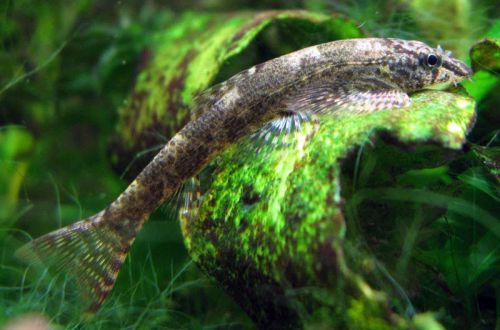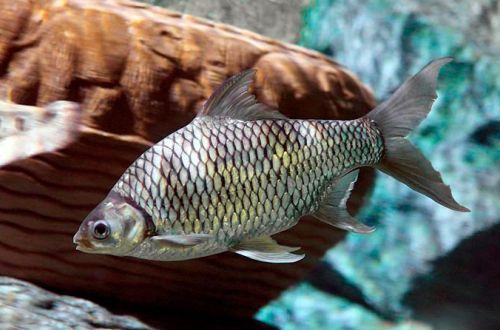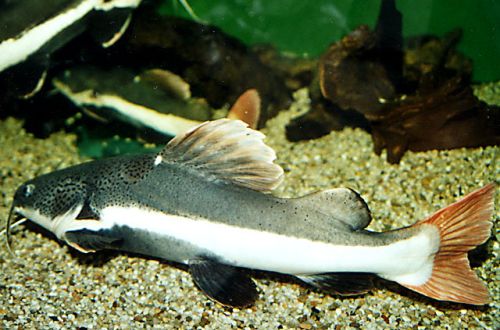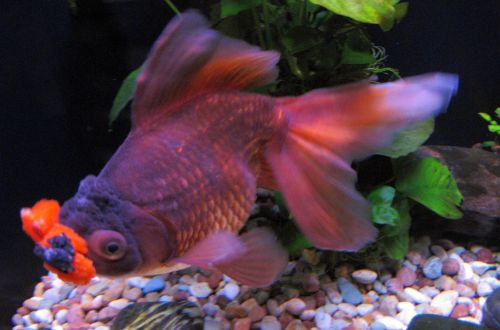
Homalopter Smith
Smith’s Homaloptera, scientific name Homalopteroides smithi, belongs to the family Balitoridae (River loaches). The fish is named after ichthyologist Hugh Smith (1865–1941), who discovered many tropical fish in Siam, now Thailand. Easy to keep, peaceful, gets along well with other species. The only downside is the dull coloring.

Contents
Habitat
It comes from Southeast Asia from the vast basin of the largest rivers in this region, the Mekong and Chao Phray, covering the territories of Thailand, Laos, Cambodia, and Vietnam. Despite the huge natural distribution area, the fish is found only in the upper reaches of rivers flowing down from mountains and hills, or in areas with a rapid current. A typical biotope is a fast shallow water stream with numerous rapids and cascades. The substrates consist of stones and boulders interspersed with driftwood of varying size from branches to fallen tree trunks. Aquatic vegetation grows mainly along the coast.
Brief information:
- The volume of the aquarium – from 50 liters.
- Temperature – 20-25°C
- Value pH — 6.0–7.5
- Water hardness – soft to medium hard (2-12 dGH)
- Substrate type — stony
- Lighting – moderate or bright
- Brackish water – no
- Water movement – moderate or strong
- The size of the fish is 5–6 cm.
- Food – any sinking food
- Temperament – peaceful
- Keeping in a group of 5-6 fish
Description
Adults reach a length of 5–6 cm. Outwardly, it resembles its closest relative Homalopter Tweedy, so they are often confused. The fish has an elongated body, enlarged pectoral and pelvic fins, resembling miniature fans oriented horizontally. With the help of these fins, it is firmly pressed against the surface of the stones, which allows it to effectively resist strong currents. The coloration is gray with 5-6 dark markings, which are most clearly visible from above. However, the body pattern is not always clearly visible.
Food
The basis of the diet in the wild are small crustaceans, insect larvae and other invertebrates. In the home aquarium, the daily diet may include dry, frozen sinking foods. Live bloodworms, brine shrimp, large daphnia, etc. are good choices.
Maintenance and care, arrangement of the aquarium
The optimal size of the aquarium for a group of 6 fish starts from 50-60 liters. Of key importance in keeping Homalopter Smith is high quality water with a high content of dissolved oxygen. The presence of an internal flow is welcome. In part, it will imitate the rapid flow of a mountain river. A productive filtration system can solve some of these problems, but in maintaining biological balance, a number of mandatory aquarium maintenance procedures cannot be neglected, in particular: weekly replacement of part of the water with fresh water and regular removal of organic waste (food leftovers, excrement).
Design elements are selected taking into account the fact that they must withstand a moderate or strong current. The basis of the decor will be pebble soil, stones, driftwood, artificial plants, perhaps some living vegetation from among unpretentious varieties, for example, anubias, some aquatic mosses and ferns.
Behavior and Compatibility
Peaceful calm fish, prefers to be in the company of relatives and other non-aggressive species of comparable size, able to live in a similar environment. If the current is not strong, then many cyprinids (rasboras, barbs, danios), other non-territorial chars, etc. will do.
Breeding / breeding
At the time of writing, the authors could not find reliable information about the successful breeding of Homalopter Smith in a home aquarium.
Fish diseases
Health problems arise only in case of injuries or when kept in unsuitable conditions, which depresses the immune system and, as a result, provokes the occurrence of any disease. In the event of the appearance of the first symptoms, first of all, it is necessary to check the water for the excess of certain indicators or the presence of dangerous concentrations of toxic substances (nitrites, nitrates, ammonium, etc.). If deviations are found, bring all values back to normal and only then proceed with treatment. Read more about symptoms and treatments in the Aquarium Fish Diseases section.





